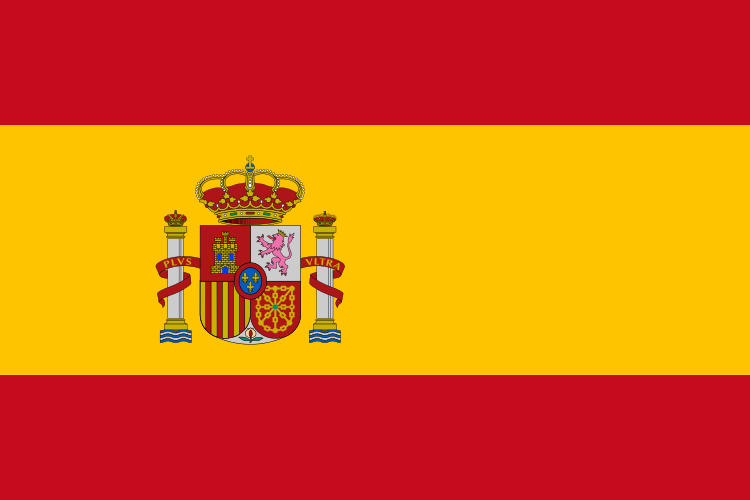The Flag of Spain: Colors, Meaning, and Historical Significancec
The flag of Spain, also known as "la Rojigualda," is a tricolor flag with three horizontal stripes of equal width. The colors and elements of the flag hold deep historical significance and represent the diverse regions and rich heritage of the Spanish nation.
Colors and Meaning:
- Red: The two vibrant red stripes at the top and bottom of the flag symbolize the Spanish kingdoms of Aragon and Navarre. These ancient regions played crucial roles in Spain's medieval history, and their red hue represents qualities such as bravery, strength, and the willingness to make sacrifices.
- Yellow (Gold): The central golden yellow stripe embodies the Spanish kingdoms of Castile and León. Castile was one of the most influential medieval kingdoms in Spain, and León held significant historical importance. The yellow color signifies generosity, constancy, and unity among the diverse regions of Spain.
The Coat of Arms:
The Spanish coat of arms, featured in the center of the yellow stripe on the state flag and naval ensign, is a testament to the country's royal history and maritime prowess.
- Central Shield: The shield at the core of the coat of arms is divided into six quarters, each representing a different historical kingdom or region within Spain. From top to bottom and left to right, these quarters represent Castile, León, Aragon, Navarre, Granada, and the lesser-known House of Bourbon-Anjou.
- Pillars of Hercules: The shield is supported by two columns known as the Pillars of Hercules, symbolizing the legendary Strait of Gibraltar, the gateway to the Atlantic Ocean. This element represents Spain's historical maritime power and its adventurous exploration and colonization during the Age of Discovery.
- Royal Crown: Above the shield rests a royal crown, signifying Spain's monarchy and the historical ties between the monarchy and the nation.
Legal Status and Usage:
The flag of Spain is officially recognized and protected by Spanish law. Its design and use are regulated by the Spanish Constitution and other legal statutes.
- Display: The flag is commonly flown at public buildings, official events, and celebrations throughout Spain and its territories. It is also proudly displayed by Spanish embassies and consulates worldwide to represent the country internationally.
Naval Ensign:
The Spanish Naval Ensign, reserved exclusively for the Spanish Navy, incorporates the national tricolor with the coat of arms placed at the center of the yellow stripe. Additionally, the naval ensign features a small anchor symbol at the fly end (right side) of the flag, symbolizing its use by the navy.
Flag Protocol:
When the flag of Spain is flown alongside other flags, it takes a prominent position and should have equal or greater prominence than other flags present. The flag is commonly hoisted on flagpoles, displayed from buildings, and flown from ships during maritime events.
The flag of Spain represents not only the country's identity and history but also the shared values, unity, and pride of its people in their rich cultural heritage. As a powerful symbol of Spain's past and its place in the global community, the flag stands tall as a source of national pride and unity.
Last Updated on: August 18, 2025
